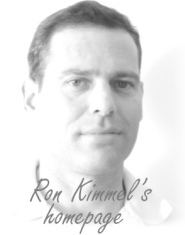Nationality Israel | Name Ron Kimmel Role Author | |
 | ||
Doctoral advisor Alfred Bruckstein, Nahum Kiryati Known for Geodesic Active ContoursImage SegmentationNon-rigid shape analysis Notable awards IEEE Fellow (2009)Helmholtz-Test of Time-Award (2013) Books Numerical geometry of images Fields Engineering, Computer Science, Mathematics | ||
Institutions Technion, UCBStanford | ||
For healthier babies optimal inhalation mask ron kimmel of technion
Ron Kimmel (Hebrew: רון קימל, b. 1963) is a professor of Computer Science at the Technion Israel Institute of Technology. He holds a D.Sc. degree in electrical engineering (1995) from the Technion, and he was a post-doc at UC Berkeley and Berkeley Labs, and a visiting professor at Stanford University. He has worked in various areas of image and shape analysis in computer vision, image processing, and computer graphics. Kimmel's interest in recent years has been non-rigid shape processing and analysis, medical imaging, computational biometry, numerical optimization of problems with a geometric flavor, and applications of metric geometry and differential geometry. Kimmel is an author of two books, an editor of one, and an author of numerous articles. He is the founder of the Geometric Image Processing Lab [1], and a founder and advisor of several successful image processing and analysis companies.
Contents
- For healthier babies optimal inhalation mask ron kimmel of technion
- Ron Kimmel
- Work
- Awards
- Books
- References
Kimmel's contributions include the development of fast marching methods for triangulated manifolds (together with James Sethian), the geodesic active contours algorithm for image segmentation, a geometric framework for image filtering (named Beltrami flow after the Italian mathematician Eugenio Beltrami), and the Generalized Multidimensional Scaling (together with his students the Bronstein brothers) with which he was able to compute the Gromov-Hausdorff distance between surfaces.
In 2003, he appeared in an interview to WNBC on the use of geometric approaches in three-dimensional face recognition.
